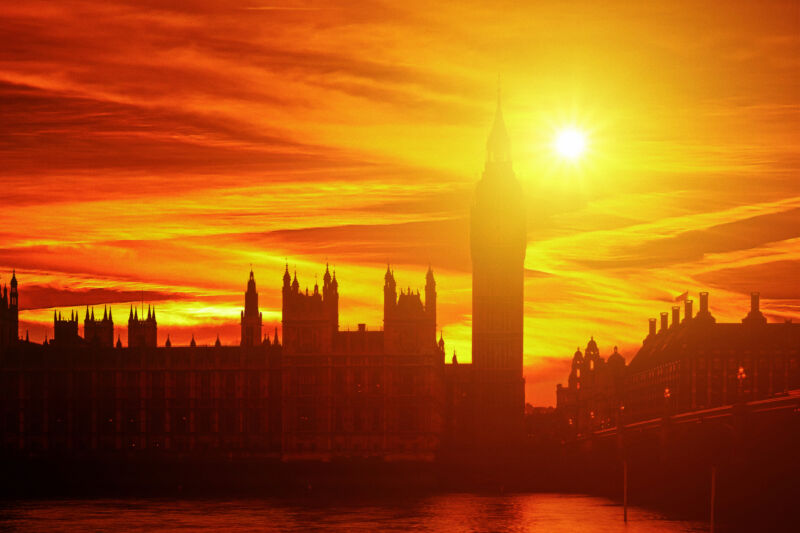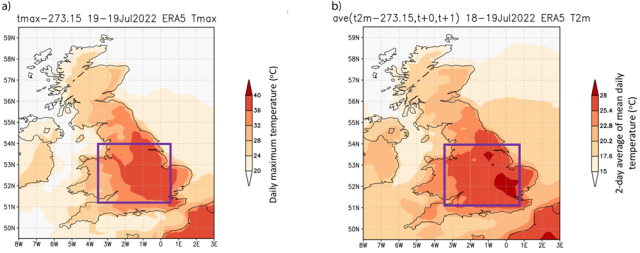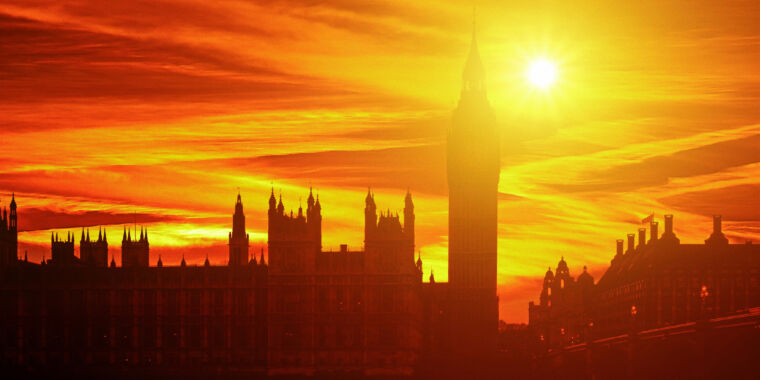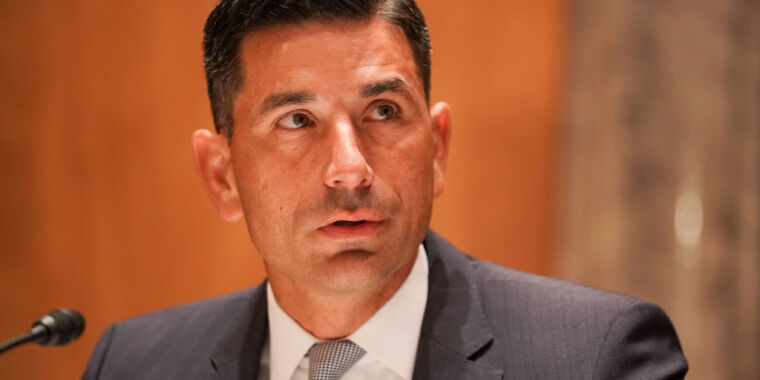
Early last week, the UK experienced something it is very much not known for—extremely hot and dry weather. The heatwave shattered all-time national records, surpassing a 38.6° C (101.5° F) mark set in 2019 by crossing 40° C (104° F) for the very first time.
The scientists behind the World Weather Attribution project use a standardized (and peer-reviewed) method to rapidly analyze weather extremes like this in the context of climate change. While there is more nuance to this science than saying an event should or shouldn’t be blamed on climate change, we can say something about the role that climate change plays. And for heatwaves, that role is often quite clear: In a warming world, the statistics of heatwaves will necessarily shift toward hotter temperatures.
The analysis of this event involves two complementary steps. First, the historical data is used to calculate the rarity of this extreme weather event in today’s climate—and what it would have been before the world warmed by about 1.2° C (2.2° F). Second, large collections of climate model simulations with and without human-caused warming are similarly examined for trends in the type of regional weather pattern that produced the event.

The team looked at two-day-average temperatures and maximum temperatures over England and Wales for July 18–19. In today’s climate, that two-day average experienced during the heatwave comes in at around a 1 percent annual probability—often referred to as a 100-year event. The maximum temperature looks even rarer, with just a 0.1 percent probability or 1,000-year return period.
Subtracting 1.2° C of global warming would make it much more difficult to reach such high temperatures. The team describes the odds in a pre-industrial climate as “almost impossible,” with calculated return periods well over 10,000 years. Or to frame it another way, a similarly rare event in a pre-industrial climate would actually fall about 4° C (7.2° F) shy of last week’s records.
The model simulation side of the analysis was complicated by the fact that climate models show too small of a trend in heatwaves in Europe. As a result, the model estimates of either the change in rarity or the temperature difference for a similarly rare event in the past are smaller than the estimates based on real-world data.
Still, the team incorporates model estimates, leading to final numbers they describe as “almost certainly an underestimation.” They conclude that climate change has made a heatwave of this severity at least 10 times more likely than it was in the pre-industrial past, increasing its intensity by at least 2° C (3.6° F).
As is often the case for severe heatwaves, it has been a dry year in the area. This has been the UK’s driest July since 1911, in fact. Just as sweat evaporating off your skin carries heat away and cools your body, soil moisture can reduce land surface temperatures. Without that evaporative cooling, heatwaves can reach even higher temperatures.
The dry conditions also led to a remarkable set of fires in the UK during the heatwave. The London Fire Brigade called July 19 its “busiest day since World War II.” The UK is not alone in experiencing abnormal fire activity—July has seen fires breaking records across Europe.
Yesterday was the Brigade’s busiest day since World War II as unprecedented hot weather meant firefighters dealt with more than 1,146 incidents across #London and Control took 2,670 calls. Heroic action taken by firefighters meant there were no fatalities. https://t.co/UytCtH6ggx pic.twitter.com/KFxOWjtsFt
— London Fire Brigade (@LondonFire) July 20, 2022
But it was the heat itself that was a killer in the UK, where fewer than 5 percent of homes are equipped with air conditioning. The death toll is expected (based on past data) to reach into the hundreds, at least. The heatwave was forecast well in advance, however, which allowed for warnings and the implementation of heat action plans that may have helped.
A UK Met Office study published in 2020 actually highlighted the growing odds of surpassing 40° C back in 2020. (The Met Office even went as far as filming a hypothetical heatwave forecast in the year 2050 to drive home the point.) In a World Weather Attribution press release for the new analysis, Met Office scientist Fraser Lott said, “It’s been sobering to see such an event happen so soon after that study, to see the raw data coming back from our weather stations.”
It’s a reminder that last week’s very real heatwave is a predictable consequence of cranking up the thermostat on a planet.








